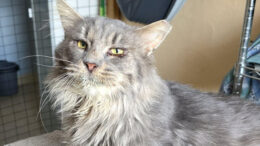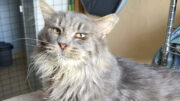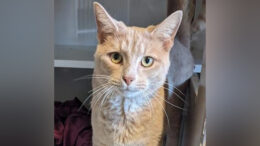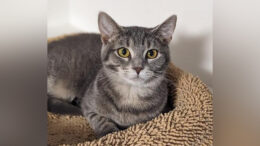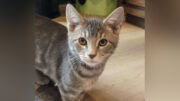Many houseplants thrive outdoors in the summertime, but must be brought indoors before temperatures get too low. Learn how to help them readjust to conditions inside the house.
Place the plants in a room that is isolated from your other plants. The room should have bright light and good air circulation. The first thing to do is thoroughly inspect your plants. Use a magnifying glass or hand lens to look at the leaves, under the leaves, along the stems, and even at the soil. Hold a piece of white paper under the leaves and gently tap them to see if anything falls on the paper. Jostle the plant to see if any insects fly away from it. If possible, lift the plant out of the pot, soil and all, to see if there are any critters hiding in there. Inspect them daily (yes, really!) for a week or two and treat for whatever pest may appear.
Aphids cluster around new stem growth and in flower buds and flowers, and secrete a sticky substance called honeydew. Mealybugs look like tiny spots of white cotton and gather where stems meet, on stems, and on the undersides of leaves. Spider mites are too tiny to see, but there may be fine webbing on the stems and under the leaves. Whiteflies rise up in a cloud when the plant is moved. Scale insects look like tiny, oval, white to brown bumps on stems and leaves; they also produce honeydew.
If you don’t see actual insects, look for signs that they are present, such as honeydew or the black mold that grows on it, the above mentioned webs, curling or yellowing leaves, and stunted or distorted new growth.
If you do see a few insects, rub, wipe, or pick them off by hand or spray them off with water. Clean up all debris on the soil surface. If hand-picking or hosing off the plant does not take care of the problem, try using a cotton swab dipped in rubbing alcohol to remove them. If you still see insects, try spraying with insecticidal soap or horticultural oil.
Insecticidal soap consists of fatty acids that destroy the cell membranes of insects, eventually causing them to die. Be sure to read and follow label instructions. Water the plant well a couple days before spraying, and keep it out of the sun. Test the insecticidal soap on a small portion of your plant, wait a day or two to see if there is any damage to the foliage and, if not, spray the rest of the plant. If using a concentrate, mix with distilled water rather than plain tap water. Horticultural oil smothers insects and their eggs. Use the same precautions (read the label!).
Repotting your plants in fresh, sterile potting soil is helpful in eliminating some pests, such as the larvae of fungus gnats, which feed on roots and decaying organic matter in the soil. This is also the best defense against ants, slugs, sowbugs, and anything else that may have crawled into the soil. Be sure to use a clean pot that has been sterilized with 1:9 bleach to water solution. A layer of sand on top of the soil will prevent adult fungus gnats from laying their eggs.
Do not let your plant sit in a saucer of water, as this will attract springtails and adult fungus gnats. Springtails also like damp soil. They are rarely harmful to plants, as they feed on decaying roots and fungi, but they can be very annoying because they jump all over the place, especially after watering. Let the soil dry out as much as possible before watering again, but don’t let the plant wilt.
As a side note, when potting up a plant to spend the summer outside, place a piece of fine screening over the drainage holes. This will help keep some pests out of the container.
Most plant diseases are caused by fungi. Spots on the leaves with dots in them indicate fungi. Powdery mildew is also caused by a fungus; it appears as a white powdery growth on the leaves. Prune off any affected plant parts. Water only when the top inch or two of soil is dry to the touch, and try not to get any water on the foliage. Make sure the soil drains well. Decreasing humidity and increasing air circulation around the plant should help keep the fungus from recurring. If most or all of the plant is affected, you would be better off pitching it.
A good way to prevent your plants from getting sick or infested in the first place is, of course, to keep them from getting stressed. Give them the proper light, water, and fertilizer and clean up all dead leaves and spent flowers. Monitor them outside throughout the summer for pests and diseases and treat anything before the mad scramble to bring them in before frost. All of this information also applies to any new plant you purchase and bring home. Hopefully it will come from the garden center without pests, but it doesn’t hurt to inspect and quarantine it for a few days to a week just to be sure.
– Sarah Graham, Master Gardener
This educational blog is a series of informative articles from the Penn State Master Gardeners volunteers plus news concerning the group and their activities. For more information, click here.


